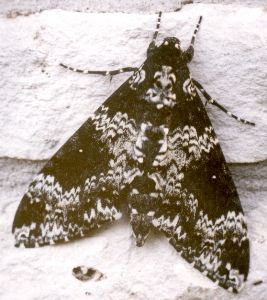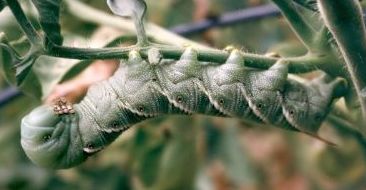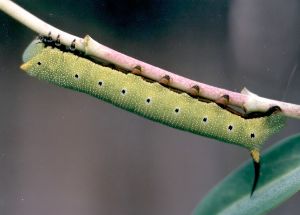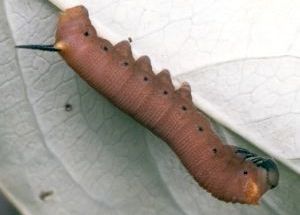Sphinx Moths
by Valerie (June 27, 2000)
revised May 5, 2006
 Sphinx moths are large and powerful flyers. They are also called hummingbird moths, because they sometimes hover and are about the size of hummingbirds, or hawk moths because of their fast, swooping flight. They usually fly at night but sometimes can be seen early in the morning or in late evening. I've sometimes been startled by the loud sound of their flight when they are nearby. I also remember once seeing a small moth flying near flowers and it just looked like a body with a blur around it. I could reach close to it and feel the wind from its wings, as if it was surrounded by a force-field.
The three moths pictured here are all different species. At left is a rustic sphinx (Manduca rustica). Below at left is a vine sphinx (Eumorpha vitis) and at right a Carolina sphinx (Manduca sexta). These moths have startling bright colors on their lower wings that are hidden when they are at rest. These are probably a type of defense against predators, in the form of surprise when the color is revealed. Hawk moths have long proboscises and feed on such flowers as trumpet vine and the enormous jimsonweed.
     |